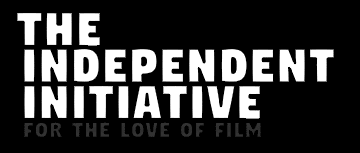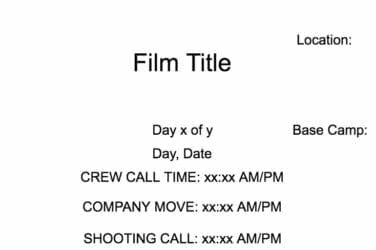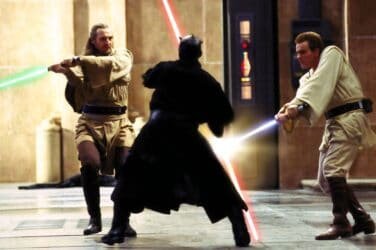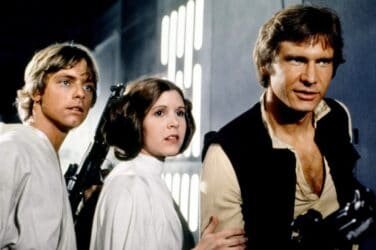Independent filmmakers have a limited budget and time for production. The more issues you catch in pre-production, the greater the chance you can avoid re-shoots. While you may not be able to skip it entirely, the Technical Storyboards can help you avoid the shots you can’t use once you get to the editing room. For more insight on production paperwork, check out the previous article on Storyboards.
What is a technical storyboard?
A technical storyboard is a drawing of all the camera setups in a scene. For a bigger scene, all the shots may not fit on one, so more may be required. These are taken from an aerial view. For a more in-depth look at using Technical Storyboards, check out this article.
Why is a technical storyboard important?
Technical storyboards help you determine if the shots you want work in the story. When you plot all the camera setups, you can see if your shots follow the 180° rule or the 30° rule. You can choose to ignore those if you wish.
You may also discover that some of your shots aren’t actually possible, because of walls or ceilings. This gives you time before the shooting day to rethink the shots or get creative with your filming.
Who is involved with a technical storyboard?
The director and head of camera department (director of photography/cinematographer) will be the main people who see the Technical Storyboards.
The lighting and camera departments will be directly affected by whatever the Technical Storyboards say. The rest of the crew will need to adjust as well.
What is included in a technical storyboard?
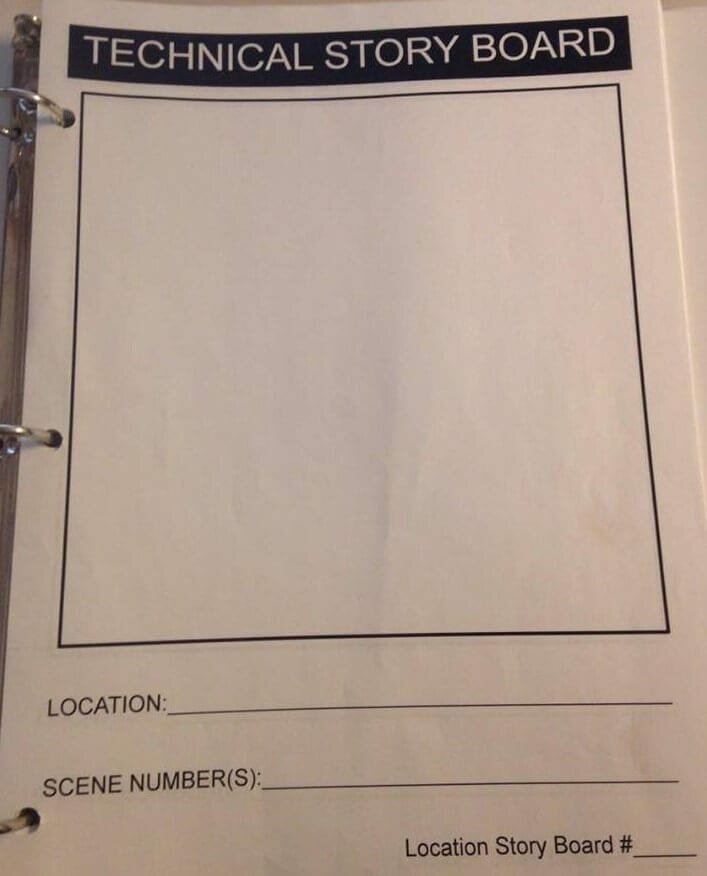
This is an idea of what a technical storyboard may look like. The location is where the scene will be filmed. The scene number, or numbers (should there be multiple filmed at once), should be listed. The location storyboard number is usually one unless there is more than one board for a location.
For a template of a Technical Storyboard, here is a PDF or an Excel format you can download.
If there is a time gap between scenes where set or wardrobe will change, this should be a different storyboard.
The large square is where a sketch of the scene goes. Be sure to plot your characters as well, with the direction they’re facing.
For each camera setup, it can be as simple or as detailed as you choose. These are the two different symbols I use for a camera.

For pans, use arrows to show the direction the camera will be moving.


For dolly shots, either sideways or in and out, show the track you will be following. Also include the start and end position with an arrow showing the movement.
For tracking shots with a handheld rig, vehicle or cart, show the main beats like you did with the storyboards. Tilts can be labeled with tilt.
Each of the storyboard frames or sequences (for tilt and similar shots) should be included on the technical storyboard. Each of the camera setups should be labeled with the shot number to correspond with the number you gave it on the storyboard.
Here’s an example technical storyboard I did.
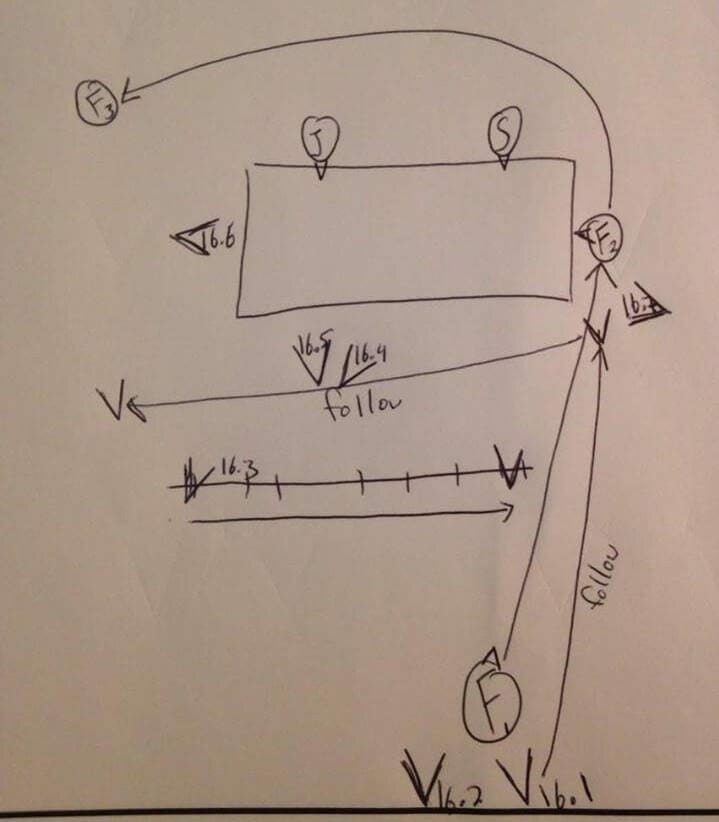
In the scene Jesse (J) and Sam (S) are sitting at a table. Fred (F) comes in, and then later, leaves. There are seven shots, labeled 16.1-16.7.
Shot 16.3 is a dolly shot moving to the right.
Shot 16.1 is a follow shot with a handheld camera or something similar. I have the camera on Fred, following him as he moves to the head of the table. Once Fred leaves again, the camera stays on him, tracking with him as he leaves.
The other shots are on a tripod, without any camera movement.
While it may not be completely clear what the framing is for the shot, what lenses may be needed and other details, this, with the storyboards, will give a good idea what the camera and grip department will require.
While being adaptable is necessary in a film crew, take my advice and plan as much out ahead of time to reduce the stress on shooting day.



